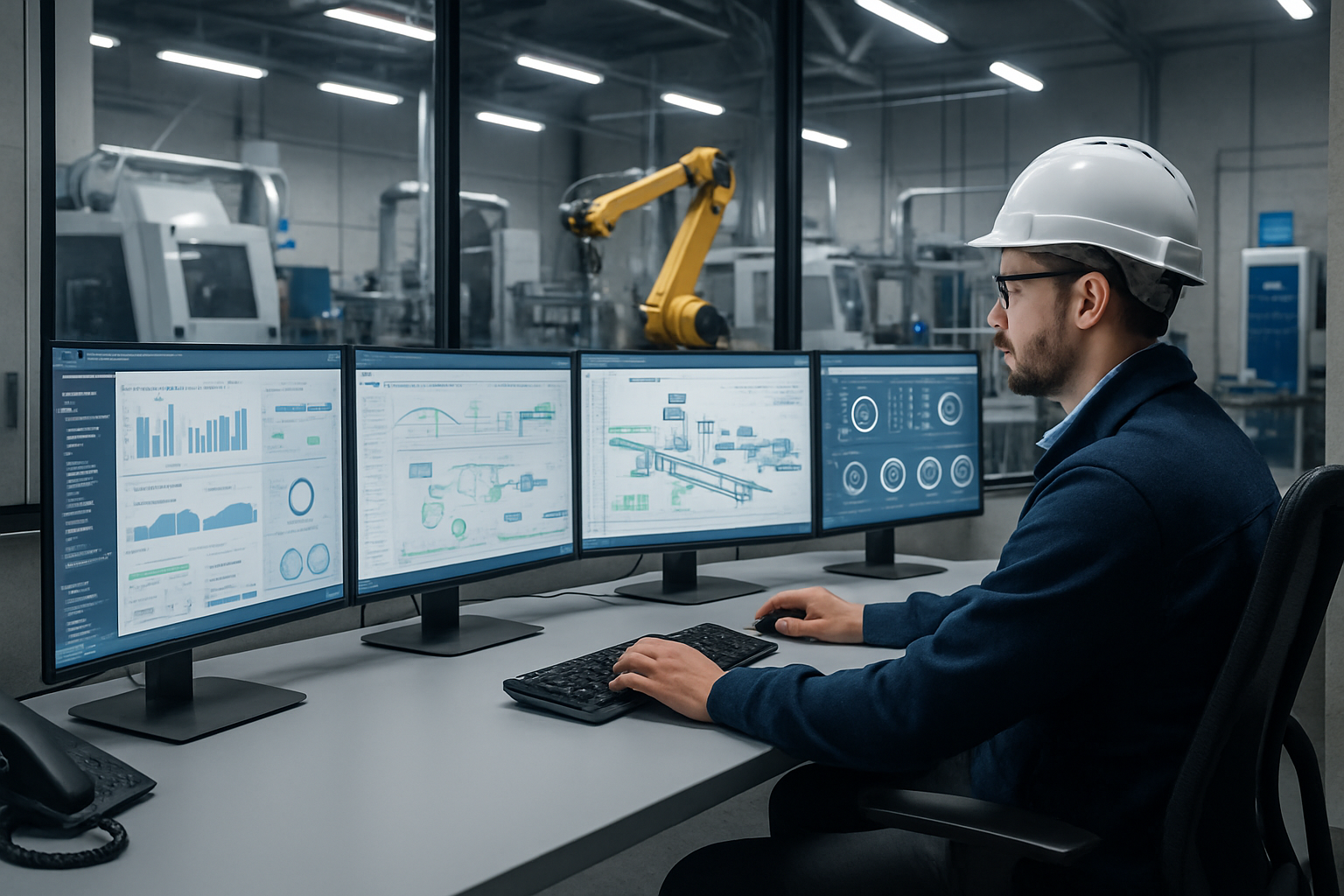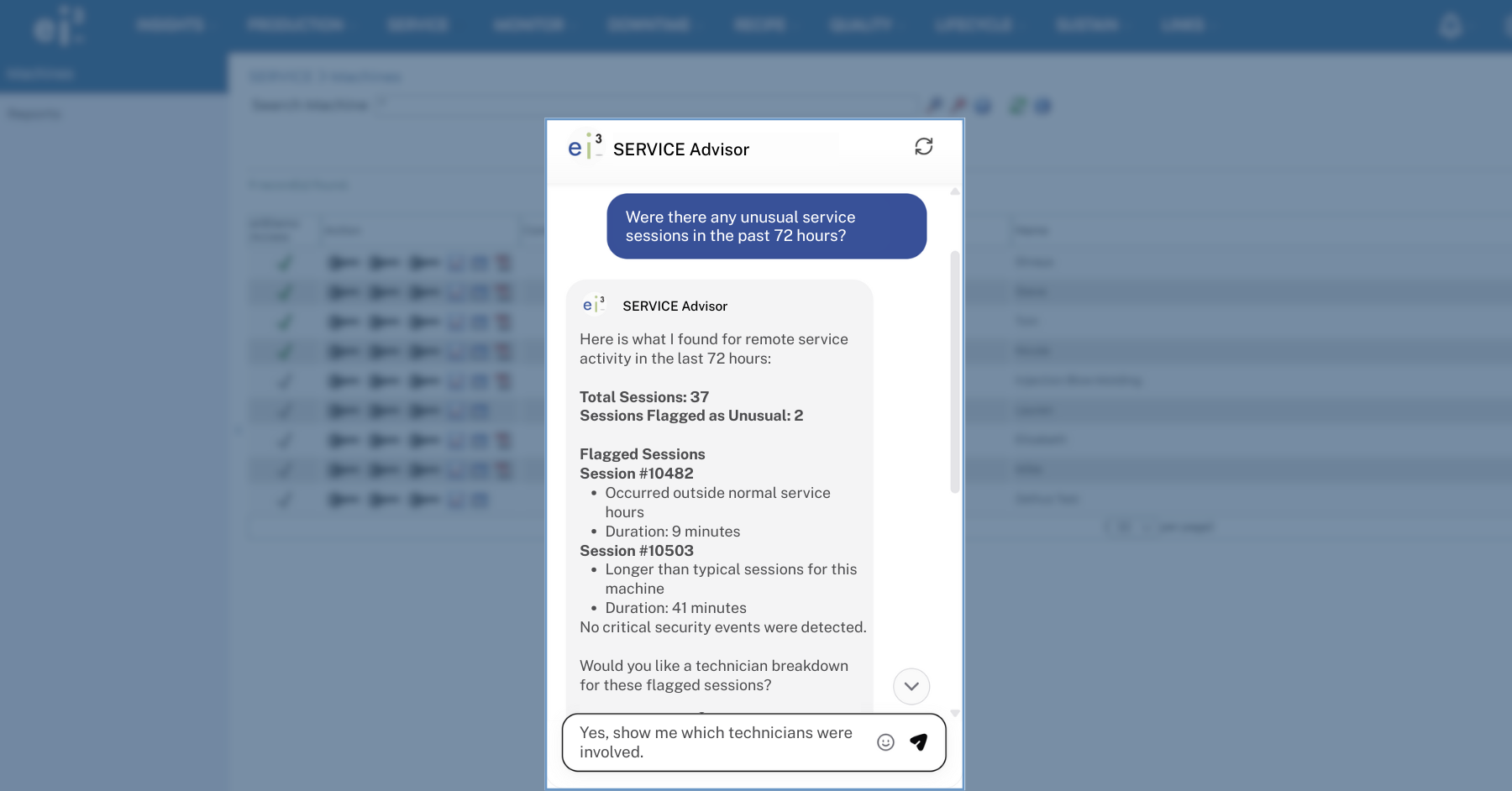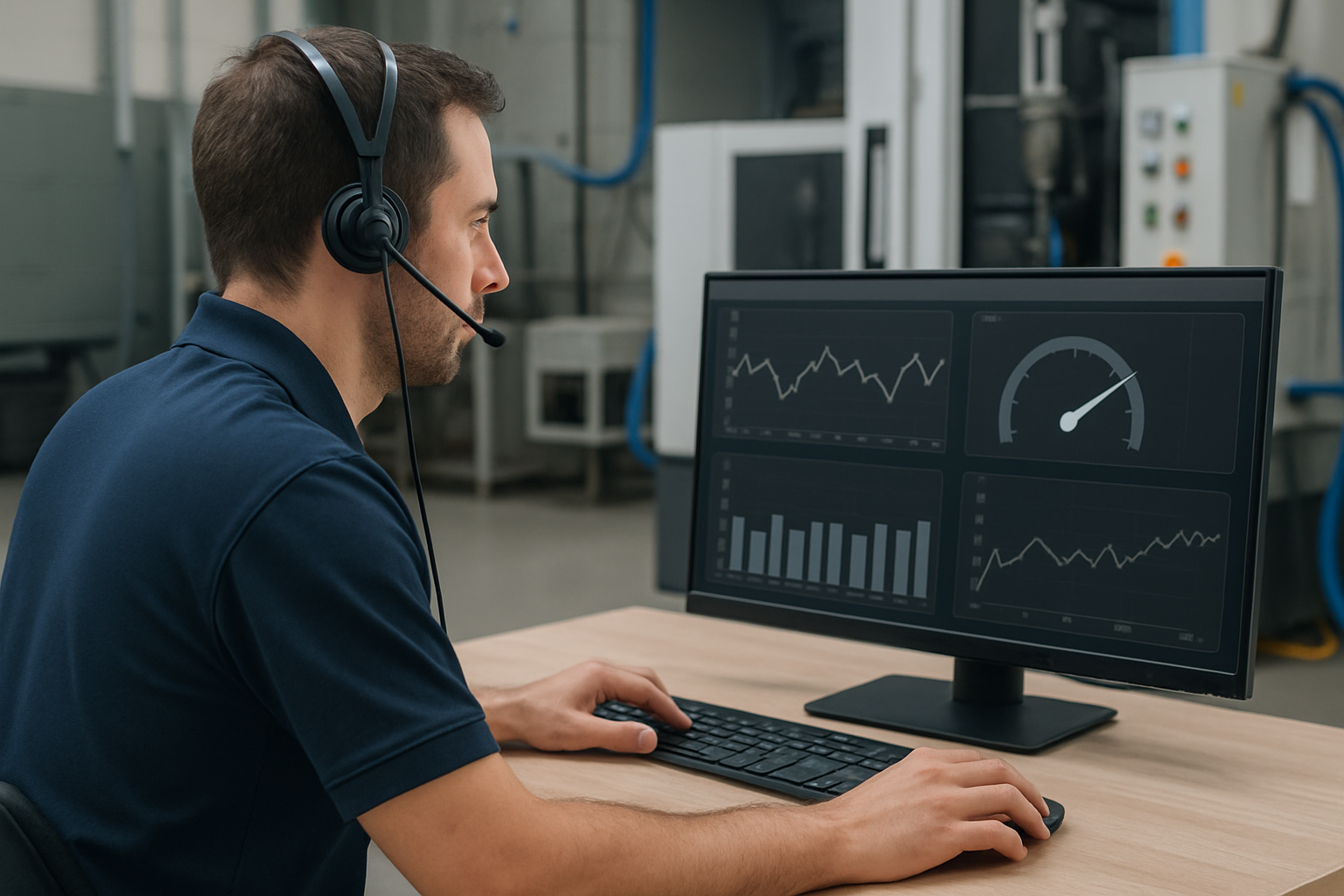Predicting the health of machinery isn’t as simple as plugging into a few pre-built analytics tools. It requires specialized algorithms tailored to each machine and its unique operating environment.
Off-the-shelf convenience functions might answer basic questions—but not the ones that keep engineers up at night. At ei3, we believe that successful predictive maintenance solutions require more than just advanced AI tools. They need data scientists who deeply understand both the algorithms and the engineering behind the machines. That's why we've built more than just a powerful AI toolbox—we've developed a proven methodology to create real-world value from industrial data.
Over years of experience working with manufacturers around the world, we've refined a systematic approach that reduces risk, shortens development time, and delivers measurable ROI.
Our three-step methodology
1. Build a digital model of the machine
We start by analyzing the available data to build a mathematical model of the machine or process—often referred to as a "digital twin." This model is created using:
- Historical machine data
- Engineering insights
- Semi-automated tools that accelerate implementation
2. Detect and interpret deviations
Once we have the model, we monitor for deviations from expected behavior. These anomalies are then enriched with semantic information through a process known as "tagging."
This critical step combines:
- Advanced analytics
- Expert knowledge of the machine
- Contextual understanding
This allows us to accurately identify whether deviations indicate normal variation, early signs of failure, or long-term wear and tear.
3. Deploy a predictive algorithm
Finally, the model and its tags are transformed into a real-time predictive algorithm. This algorithm runs continuously:
- Monitoring incoming data streams
- Detecting anomalies as they emerge
- Triggering alerts or backend events
- Delivering critical insights to the right people at the right time
Siri, Alexa, and all others, step aside. Our system delivers the answers that engineers and operators actually need: advance warning before things go wrong.
Want to see how it works in a real production environment? Contact us for a demo and discover the results AI can deliver on the factory floor.





